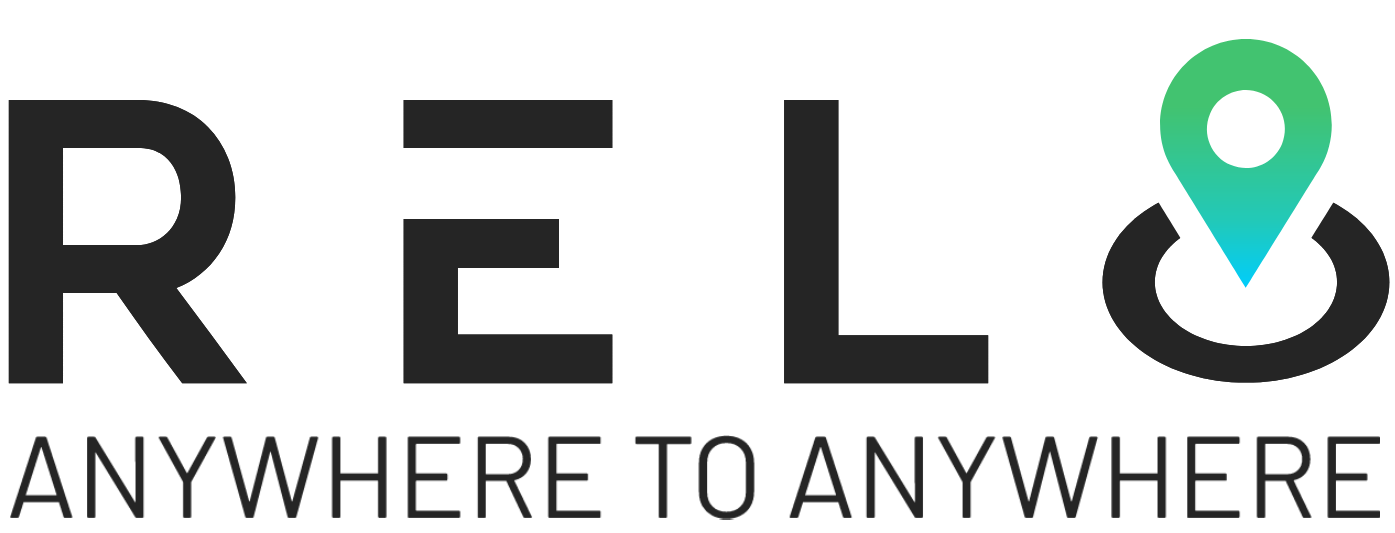When a Singapore-based cybersecurity firm opened a senior engineer role this spring, two candidates forced a complex decision. One was ready to move from Warsaw, the other to work remotely from Buenos Aires. Moving an employee costs about $95,000 with housing and visas. Remote onboarding required $12,000. Relocated workers stayed 4.5 years, remote ones two. Across industries, companies face the same calculus. In a recent relocation vs remote hire cost analysis, 61% of global firms said relocation builds stronger team cohesion despite rising costs.
Meanwhile, 39% favoured remote hiring for flexibility. Each path carries invisible trade-offs, culture versus cost, loyalty versus logistics.
As global hiring accelerates, knowing where value truly lies has become one of the defining financial questions of modern work.
How Has the Definition of Cost Expanded in Global Hiring?
Relocation once meant airfare, shipment, and a corporate apartment. Today, it means compliance, housing inflation, visa risk, mental-health support, and tax harmonization.
According to Mercer’s Global Mobility Trends 2024, a mid-career relocation package averages $80,000 to $120,000 for a family of four. At first, it appears to be one simple cost. In reality, it covers moving logistics, schooling, housing allowances, and tax equalization.
Over time, additional costs begin to surface. Eventually, what looked simple on a spreadsheet becomes a long-term financial commitment.
Remote hiring appears leaner. The usual cost of digital onboarding falls within $8,000 to $12,000. It covers hardware, licenses, and compliance setup through Deel or Oyster HR.
However, in a careful relocation vs remote hire cost analysis, savings can be misleading.
Reduced collaboration and weaker cohesion add hidden costs. In the end, the cheaper choice may cost more than expected.
Related – How Much Do Relocation Services Cost? Here is your guide
Why Does Relocation Still Matter in a Remote-First World?
When companies move people across borders, they invest in more than physical presence. They are investing in culture, collaboration, and shared purpose.
According to Deloitte’s Global Workforce Trends Report 2024, 68% of executives believe relocation is vital for innovation and cross-border learning.
In Tokyo, municipal grants for engineers under skilled-worker visas have increased average employee tenure to 4.8 years, compared with 2.3 years for remote roles, as noted by AIRINC Mobility Benchmarking.
Consequently, longer stays create smoother projects, stronger skills, and fewer resignations. Gradually, relocation demonstrates its true strength in fostering loyalty and leadership.
Relocating early allows managers to grow their cross-cultural competence. Eventually, that global perspective supports future expansion in ways digital tools alone cannot.
What Makes Remote Hiring Cost-Efficient in a Relocation vs Remote Hire Cost Analysis?
Remote hiring, meanwhile, represents corporate agility. Oyster HR’s Global Employment Report shows a 46% global surge in remote contracts since 2020. A company in Toronto can hire a cybersecurity analyst in Manila for 40% less while maintaining continuous coverage.
Salary differentials remain striking. A San Francisco engineer typically earns $160,000 per year, while in Mexico City, that figure drops to about MX$48,000 each month, or US$95,000 annually (Glassdoor).
Even with all benefits and compliance costs considered, the savings remain clear. Overall, firms still save about 35% on total labor costs.
Remote work cuts physical costs since companies no longer pay for offices, housing, or visa arrangements. For startups managing a runway, those savings often spell survival.
However, remote systems require ongoing spending on cybersecurity and engagement infrastructure such as collaboration platforms, home-office stipends, and wellness programs that prevent isolation in a relocation vs remote hire cost analysis.

How Is Hybrid Mobility Redefining Global Workforce Models?
Many firms now blend the two.
KPMG’s Future of Mobility 2025 notes 61% of multinationals plan to replace long expatriate assignments with hybrid regional contracts, six-to-eighteen-month relocations followed by remote work.
This “hub-and-node” model lowers relocation costs by 40–50%, sustains in-person collaboration for critical months, and helps prevent burnout.
Hybrid expansion also reduces visa friction as employees rotate through regional offices without permanent transfers, preserving institutional culture while maintaining flexibility.
Also read – The Ultimate Guide to Lucrative Relocation Incentives for Remote Workers
What Tax and Legal Challenges Arise in a Relocation vs Remote Hire Cost Analysis?
Relocation and remote hiring each create compliance traps.
Expatriates risk double taxation unless supported by equalization programs under OECD treaties. Remote staff can accidentally establish a permanent establishment if they conduct core revenue activity abroad.
A PwC survey found 14% of firms incurred unexpected tax liabilities from remote employees. Even a single payroll error can erase perceived savings.
More employers are turning to centralized employment platforms for managing tax, HR, and immigration needs. The cost is roughly $400 per employee each month and remains far lower than potential penalties from tax authorities.
Can Productivity and Culture Thrive Across Distance?
Beyond finance, culture defines ROI. Gallup’s State of the Global Workplace 2024 found that in-office teams show 12 % higher engagement, while remote professionals self-report 15% greater productivity due to fewer interruptions.
An IBM internal review observed that relocated R&D teams scored higher on innovation metrics, while remote units excelled at documentation and process discipline.
The optimal formula often mixes both, like on-site collaboration for ideation and remote execution for delivery.
How Does Relocation Influence Housing and Local Economies?
Corporate relocation reshapes urban economics. In Dublin, demand from tech transferees pushed rents 8% higher year-over-year, per Ireland’s CSO. Yet Eurostat data shows expatriate families spend €60,000 annually within host economies, supporting local schools, cafés, and transport.
Remote employment avoids that strain, however, it diverts income abroad and reduces local tax bases. Moreover, for governments balancing housing affordability and growth, this trade-off shapes immigration and visa policy.
What Are the Hidden Security and Technology Costs in a Relocation vs Remote Hire Cost Analysis?
The Verizon Data Breach Investigations Report 2024 notes endpoint protection for remote users costs 23% more per capita than in-office systems.
Relocation centralizes risk but increases exposure to regional data privacy rules such as the GDPR.
No matter the model, cybersecurity investment must stay part of any mobility plan since ignoring it can result in expensive remediation later.
How Does Employee Well-Being Affect Retention and Savings?
Relocation stresses families with language barriers and spousal employment; remote work strains mental health through isolation.
LinkedIn’s Global Talent Trends 2023 found 47% of relocated employees feel “deeply valued,” versus 28% of fully remote hires. Yet 22% of remote workers reported higher burnout after a year without community support.
Many employers now see well-being as a lasting cost saver. To begin with, such programs build loyalty and cut turnover. They offer relocation support, training, and wellness stipends. As a result, firms often save about $25,000 per employee through better retention.
What Do Real-World Case Models Reveal About Cost and Culture?
Numbers alone rarely tell the full story. Actual company decisions reveal how relocation and remote hiring play out beyond spreadsheets. Each case shows how cost, culture, and continuity interact in different industries.
From technology to finance, these examples highlight the practical outcomes behind every relocation vs remote hire cost analysis –
Technology – U.S. vs Eastern Europe
The startup initially relocated five engineers at a cost of $100,000 each. Soon after, it switched to hiring remotely in Poland, saving nearly $1.2 million annually. During the first half-year, productivity dropped by 17%. Eventually, it rebounded once new hybrid practices were adopted.
Pharmaceutical – Basel R&D Hub
Relocating chemists at CHF 150,000 per scientist boosted patent output by 22% within two years, according to filings with the Swiss Federal Institute of Intellectual Property.
Finance – Singapore Regional Office
A global bank spent SGD 180,000 per executive relocating leadership, but reduced turnover by 50% and improved client responsiveness by 20%. The expense paid for itself through stability and faster decision cycles.
Can Sustainability and ESG Goals Shape Mobility Decisions?
The International Energy Agency notes a clear climate benefit. If 15% of workers stay remote, the effect is substantial. Global CO₂ from commuting would drop sharply. That means a cut of about 54 million tons each year.
Relocation, though heavier on resources, contributes socially through taxes and volunteering. Corporations now track Social Return on Mobility (SRoM), quantifying community engagement, carbon output, and family well-being.
Sustainability officers increasingly use this alongside financial ROI to justify balanced workforce strategies.
How Can Companies Measure the Intangible Benefits of Mobility?
Consultancies like EY are piloting “cost-per-cohesion” indicators, linking spending on mobility, engagement, and collaboration to innovation scores.
Preliminary findings reveal a clear pattern among global firms. To begin with, companies that invest $30,000 to $35,000 per employee each year in mobility and engagement see stronger results.
They show noticeably higher creative output across teams. Those chasing wage cuts fall behind in creativity.
Practical Steps for Employers in a Relocation vs Remote Hire Cost Analysis
Good strategy requires more than budget awareness. The most successful companies treat workforce planning as an ongoing financial and cultural exercise. Each step connects data with decision-making, helping employers balance cost efficiency and long-term stability.
From budgeting to retention, these actions reveal how to use every relocation vs remote hire cost analysis as a practical management tool –
- Run dual budgets – Calculate both relocation and remote scenarios with total-cost-of-ownership, not headline salary.
- Plan for taxation – Work with global tax specialists before onboarding talent abroad.
- Build cultural connection – Invest in mentoring, training, and periodic gatherings that strengthen teams.
- Track turnover cost – Replacement expenses can offset perceived savings from remote structures.
- Use data dashboards – Mobility software now integrates cost, carbon, and compliance in real time.
These actions transform HR from transactional to strategic, aligning cost decisions with corporate values.
Recommended read – What is a Personal Mobility Policy? Essential Insights for HR Leaders
What Will the Corporate Balance Sheet Reveal About Work?
By 2025, companies will have outgrown the relocation-versus-remote discussion and will instead manage integrated portfolios of employees.
Meanwhile, innovation leaders work onsite, remote contributors stay global, and project teams adapt between both structures using data as direction.
A complete relocation vs remote hire cost analysis weighs retention, tax stability, data security, and sustainability. The most successful firms treat mobility as a system, not an expense.
“The smartest companies no longer choose between relocation and remote work. They design both into one system,” said David Morales, a global mobility strategist.
Smarter Workforce Planning Solutions
At Relo.AI, we help organizations make smarter workforce decisions through clarity and precision. Our solutions simplify complex choices between relocation and remote hiring by aligning costs, compliance and employee experience into one transparent framework.
We analyze every factor that matters, from housing and visa logistics to digital infrastructure and retention metrics, so employers can see the whole picture before committing resources. We join forces with HR and leadership to estimate every expense, align taxation policies and craft relocation programs that preserve company culture. When organizations expand internationally, each move is built on data, foresight and strategic balance.
With clear data insights and expert relocation planning, Relo.AI enables employers to manage costs effectively and sustain organizational flexibility.
Book a FREE session with us and explore how strategic mobility planning turns workforce costs into a competitive advantage.
Bottom Line
Relocation vs remote hire cost analysis shows what balance truly means in the modern workplace. Moving talent builds unity. Staying remote expands reach. Each path carries its own rhythm and reward. Relocation strengthens connection and collaboration. Remote hiring delivers agility and global access. Together, they define how companies grow, adapt and endure. Presence creates belonging. Distance creates possibility.
The smartest employers use both to shape stronger teams and lasting value in a borderless world.











